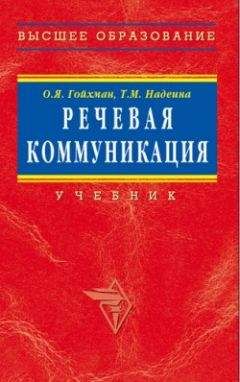Ричард Харрис - Психология массовых коммуникаций
Kosicki, G. M. (1993). Problems and opportunities in agenda-setting research. Journal of Communication, 43(2). 100–127.
Kottak, C. P. (1990). Prime time society: An anthropological analysis of television and culture. Belmont, CA: Wadsworth.
Krafka, C. L. (1985). Sexually explicit, sexually violent, and violent media: Effects of multiple naturalistic exposures and debriefing on female viewers. Unpublished doctoral dissertation. University of Wisconsin, Madison. Kraus, S. (Ed.). (1962). The great debates. Bloomington, IN: Indiana University Press.
Kraus, S. (Ed.). (1977). The great debates: 1976, Ford vs. Carter. Bloomington, IN: Indiana University Press. Kraus, S. (1988). Televised presidential debates and public policy. Hillsdale, NJ: Lawrence Eribaum Associates.
Kraus, S. (1996). Winners of the first 1960 televised Presidential debate between Kennedy and Nixon. Journal of Communication, 46(4), 78–96.
Kubey, R. (1980). Television and aging: Past, present, and future. Gerontologist, 20, 16–35.
Kubey, R. (1986). Television use in everyday life: Coping with unstructured time. Journal of Communication. 36, 108–123.
Kubey, R. (1992). A critique of No Sense of Place and the homogenization theory of Joshua Meyrowitz. Communication Theory. 2, 259–271.
Kubey. R., Csikszentmihalyi, M. (1990). Television and the quality of life: How viewing shapes everyday experience. Hillsdale, NJ: Lawrence Eribaum Associates.
Kuiper, K. (1995). Smooth talkers: The linguistic performance of auctioneers and sports-casters. Hillsdale, NJ: Lawrence Eribaum Associates.
Kunkel. D. (1988). Children and host-selling television commercials. Communication Research, 15(1), 71–92.
Kunkel, D. (1998). Policy battles over defining children's educational television. The Annals of the American Academy of Political and Social Science, 557, 39–53.
Kutchinsky, B. (1973). The effect of easy availability of pornography on the incidence of sex crimes: The Danish experience. Journal of Social Issues, 29(3), 163–181.
Lambert, W. E., Klineberg, 0. (1967). Children's views of foreign peoples: A cross-national study. New York: Appleton-Century-Crofts.
Lang, A. (1990). Involuntary attention and physiological arousal evoked by structural features and emotional content in TV commercials. Communication Research. 17 275–299.
Lang, A. (1991). Emotion, formal features, and memory for televised political advertisements. In: F. Biocca (Ed.). Television and political advertising: Vol. I. Psychological processes (p. 221–243). Hillsdale, NJ: Lawrence Eribaum Associates.
Lang, A. (Ed.). (1994 a). Measuring psychological responses to media. Hillsdale, NJ: Lawrence Eribaum Associates.
Lang, A. (1994 b). What can the heart tell us about thinking? In A. Lang (Ed.). Measuring psychological responses to media (p. 99–112). Hillsdale NJ: Lawrence Eribaum Associates.
Lang, A., Geiger, S., Strickwerda, M., Sumner, J. (1993). The effects of related and unrelated cuts on television viewers' attention, processing capacity, and memory. Communication Research, 20, 4–29.
Lang, G. E., Lang, K. (1984). Politics and television re-viewed. Beverly Hills, CA: Sage. Lang, K., Lang, G. E. (1968). Politics and television. Chicago: Quadrangle Books.
Lapchick, R., Rodriguez, A. (1990). Professional sports: The 1990 racial report card. Center for the Study of Sport in Society Digest, 2(2), 4–5.
Larsen, S. F. (1983). Text processing and knowledge updating in memory for radio news. Discourse Processes, 6, 21–38.
Larson, J. F. (1984). Television's window on the world: International affairs coverage on the U. S. networks. Norwood, NJ: Ablex.
Larson, J. F. (1986). Television and U. S. foreign policy: The case of the Iran hostage crisis. Journal of Communication. 36(4), 108–130.
Larson, J. F, McAnany, E. G., Storey, J. D. (1986). News of Latin America on network television, 1972–1981: A northern perspective on the southern hemisphere. Critical Studies in Mass Communication, 3, 169–183.
Larson, M. S. (1989). Interaction between siblings in prime time television families. Journal of Broadcasting and Electronic Media, 33(3). 305–315.
Lasisi, M. J., Onyehalu, A. S. (1992). Cultural influences of a reading text on the concept formation of second-language learners of two Nigerian ethnic groups. In: R. J. Harris (Ed.). Cognitive processing in bilinguals (p. 459–471). Amsterdam: EIsevier/North Holland.
Lasswell, H. D. (1927). Propaganda technique in the world war. New York: Knopf.
Lasswell, H. D. (1935). World politics and personal insecurity: A contribution to political psychiatry. New York: McGraw-Hill.
Lau. R. R. (1986). Political schemata, candidate evaluations, and voting behavior. In: R. R. Lau D. O. Sears (Eds.). Political cognition (p. 95–126). Hillsdale, NJ: Lawrence Eribaum Associates.
Lawlor, S. D., Sparkcs, A., Wood, J. (1994, July). When Lawrence came out: Taking the funnies seriously. Paper presented at Annual Conference of the International Communication Association, Sydney, Australia.
Lazarsfeld, P. F. (1941). Remarks on administrative and critical communications research. Studies in Philosophy of Social Science, 9, 2–16.
Lazarsfeld, P. F., Berelson, В ., Gaudet, H. (1948). The people's choice. New York: Columbia University Press.
Leaviit, L. A., Fox, N. A. (Eds.). (1993). The psychological effects of war and violence on children. Hillsdale, NJ: Lawrence Eribaum Associates.
Lee. С . С . (1980). Media imperialism reconsidered. Beverly Hills, CA: Sage.
Lee. M. A., Solomon, N. (1991). Unreliable sources: A guide to detecting bias in news media. New York: Carol Publishing Group.
Lefkowitz. M. M., Eron, L. D., Walder, L. D., Hues-man a, L. R. (1977). Growing up to be violent: A longitudinal study of the development of aggression. New York: Pergamon.
Lemar, J. (1977). Women and blacks on prime time television. Journal of Communication, 27, 70–80.
Lever, J., Wheeler, S. (1993). Mass media and the experience of sport. Communication Research, 20, 125–143.
Levin. J. P., Gaeth, G. J. (1988). How consumers are affected by the framing of attribute information before and after consuming the product. Journal of Consumer Research, 15, 374–378.
Levy. M. R. (1980). Program playback preferences in VCR households. Journal of Broadcasting, 24, 327–336.
Levy, M. R. (1982). Watching TV news as para-social interaction. In: G. Gumpert R. Cathcart (Eds.). Inter/media (2nd ed., p 177–187). New York: Oxford University Press.
Levy; M. R. (1987). Some problems of VCR research. American Behavioral Scientist, 30, 461–470.
Levy, M. R., Windahl. S. (1984). Audience activity and gratifications: A conceptual clarification and exploration. Communication Research, II, 51–78.
Lewy, G. (1978, February). Vietnam: New light on the question of American guilt. Commentary, 65, 29–49.
Leyens, J., C'amino, L., Parke, R., Berkowitz, L. (1975). The effects of movie violence on aggression in a field setting as a function of group dominance and cohesion. Journal of Personality and Social Psychology, 32, 346–360.
Liebert, R. M., Sprafkin, J. (1988). The early window: Effects of television on children and youth (3rd ed.). New York: Pergamon.
Liebes, T, Livingstone, S. M. (1992). Mothers and lovers: Managing women's role conflicts in American and British soap operas. In: J. G. Blumler, J. M. McLeod, К . Е . Rosengren (Eds.). Comparatively speaking: Communication and culture across space and time (p. 94–120). Newbury Park, CA: Sage.
Lillington, K. (1998, March). Breaking the bounds of the page. The Guardian. (Reprinted in: World Press Review. March, 1998, p. 46–47.) Lindlof, T. R., Shatzer, M. J. (1990). VCR usage in the American family. In: J. Bryant (Ed.). Television and the American family (p. 89–109). Hillsdale, NJ: Lawrence Eribaum Associates.
Linz. D. (1985). Sexual violence in the mass media: Effects on male viewers and implications for society. Unpublished doctoral dissertation. University of Wisconsin, Madison.
Linz. D., Donnerstein, E. (1988). The methods and merits of pornography research. Journal of Communication. 38(2), 180–184.
Linz, D., Donnerstein, E. (1992, September 30). Research can help us explain violence and pornography. Chronicle of Higher Education, p. B3–B4.
Linz, D., Donnerstein, E., Adams, S. M. (1989). Physiological desensitization and judgments about female victims of violence. Human Communication Research, 15, 509–522.
Linz, D., Donnerstein, E., Bross, M., Chapin, M. (1986). Mitigating the influence of violence on television and sexual violence in the media. In: R. Blanchard (Ed.). Advances in the study of aggression (Vol. 2, p. 165–194). Orlando, FL: Academic Press.
Linz. D., Donnerstein, E., Penrod, S. (1984). The effects of multiple exposures to filmed violence against women. Journal of Communication, 34(3), 130–147.
Linz, D., Donnerstein, E., Penrod, S. (1987). The findings and recommendations of the Attorney General's Commission on Pornography: Do the psychological "facts" fit the political fury? American Psychologist, 42, 946–953.
Linz, D., Fuson, I. A., Donnerstein, E. (1990). Mitigating the negative effects of sexually violent mass communications through preexposure briefings. Communication Research, 17, 641–674.
Linz, D., Malamuth, N. (1993). Pornography. Newbury Park, CA: Sage.
Linz, D., Turner, C. W, Hesse. B. W, Penrod, S. D. (1984). Bases of liability for injuries produced by media portrayals of violent pornography. In: N. M. Malamuth E. Donnerstein (Eds.). Pornography and sexual aggression (p. 277–304). Orlando, FL: Academic Press.
Loftus, E. F, Burns, Т . Е . (1982). Mental shock can produce retrograde amnesia. Memory Cognition, 10, 318–323.
"Lolita in Japan". (1997, April 6). Manhattan Mercury, p. A7.
Long, D. L., Graesser, A. C. (1988). Wit and humor in discourse processing. Discourse Processes, 11, 35–60.
Longford, L. (Ed.). (1972). Pornography: The Longford Report. London: Coronet.
Longmore, P. K. (1985, Summer). Screening stereotypes: Images of disabled people. Social Policy, p. 31–37.
Lovaas, O. L. (1961). Effect of exposure to symbolic aggression on aggressive behavior. Child Development, 32, 37–44.
Lovdahl, L. T. (1989). Sex role messages in television commercials: An update. Sex Roles. 21, 715–724.
Lowery, S., DeFleur, M. L. (1983). Milestones in mass communication research. New York: Longman. Lowry, D. T, Love, G., Kirby. M. (1981). Sex on the soap operas: Patterns of intimacy. Journal of Communication, 31, 90–96.
Lowry. D. T, Towles. D. E. (1989). Soap opera portrayals of sex, contraception, and sexually transmitted diseases. Journal of Communication, 39(2), 76–83.
Loy, J. W., McPherson, B. D., Kenyon, G. (1978). Sport and social systems: A guide to the analysis, problems, and literature. Reading, MA: Addison-Wesley.
Lozano, E. (1992). The force of myth on popular narratives: The case of melodramatic serials. Communication Theory, 2, 207–220.
Luebke, B. (1989). Out of focus: Images of women and men in newspaper photographs. Sex Roles, 20(3/4), 121–133.
Luepker, R. V, Murray, D. M.. Jacobs, D. R., Jr., Mittelmank, M. В ., Bracht, N., Carlaw, R., Crow, R., Elmer. P., Finnegan, J., Folsom, A. R. (1994). Community education for cardiovascular disease prevention: Risk factor changes in the Minnesota Heart Health Program. American Journal of Public Health, 84, 1383–1393.




